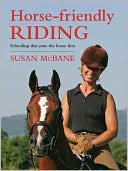Category Books
- Fiction Books & Literature
- Graphic Novels
- Horror
- Mystery & Crime
- Poetry
- Romance Books
- Science Fiction & Fantasy
- Thrillers
- Westerns
- Ages 0-2
- Ages 3-5
- Ages 6-8
- Ages 9-12
- Teens
- Children's Books
- African Americans
- Antiques & Collectibles
- Art, Architecture & Photography
- Bibles & Bible Studies
- Biography
- Business Books
- Christianity
- Computer Books & Technology Books
- Cookbooks, Food & Wine
- Crafts & Hobbies Books
- Education & Teaching
- Engineering
- Entertainment
- Foreign Languages
- Game Books
- Gay & Lesbian
- Health Books, Diet & Fitness Books
- History
- Home & Garden
- Humor Books
- Judaism & Judaica
- Law
- Medical Books
- New Age & Spirituality
- Nonfiction
- Parenting & Family
- Pets
- Philosophy
- Political Books & Current Events Books
- Psychology & Psychotherapy
- Reference
- Religion Books
- Science & Nature
- Self Improvement
- Sex & Relationships
- Social Sciences
- Sports & Adventure
- Study Guides & Test Prep
- Travel
- True Crime
- Weddings
- Women's Studies
Horse-Friendly Riding: Schooling that Puts the Horse First »

Authors: Susan McBane
ISBN-13: 9780851319575, ISBN-10: 0851319572
Format: Paperback
Publisher: Trafalgar Square
Date Published: July 2009
Edition: (Non-applicable)
Author Biography: Susan McBane
Susan McBane began riding before she started school and has long experience of riding and caring for her own and other people’s horses and ponies, ranging from children’s ponies to racehorses. She has an HNC in Equine Science and Management, is an equine shiatsu therapist and a Classical Riding Club member and Gold Award holder. In 1978, she co-founded the Equine Behaviour Study Circle (now the Equine Behaviour Forum and still edits its members’ journal, Equine Behaviour. She is currently studying for a degree in Equine Science and co-publishes the quarterly periodical Tracking-up. She is the author of over forty equestrian books and countless magazine articles. Many of her books are on college reading lists and are in demand around the world.
Book Synopsis
Most people would hate to think that the way they ride causes their horse discomfort. While many horses clearly enjoy their work and seem to understand when they have done well, sadly this is not always the case. Bored, uncomfortable and even distressed horses and ponies can be seen at most equestrian gatherings, and while some tolerate their discomfort and try to do their best despite it, others resist and make their unhappiness clear, sometimes in dangerous ways.
When it comes to learning the best riding techniques there are so many conflicting ’expert’ views out there that many riders end up not knowing who to believe, what to do or what is right and wrong. In this book, Classical Riding teacher Susan McBane cuts through this instructional maze and explains exactly how to make your riding horse-friendly – and it does not mean being weak, indecisive or ineffectual. The methods, techniques and principles she describes are simple for horses and riders to understand, and tie in with the horse’s natural way of moving, thinking and behaving. They increase calmness, so making it easier and more enjoyable for the horse to learn, and eliminate confusion and distress so that he performs his work willingly and well.
Table of Contents
Subjects

